Winter Flight Campaign 2024
February 21, 2024
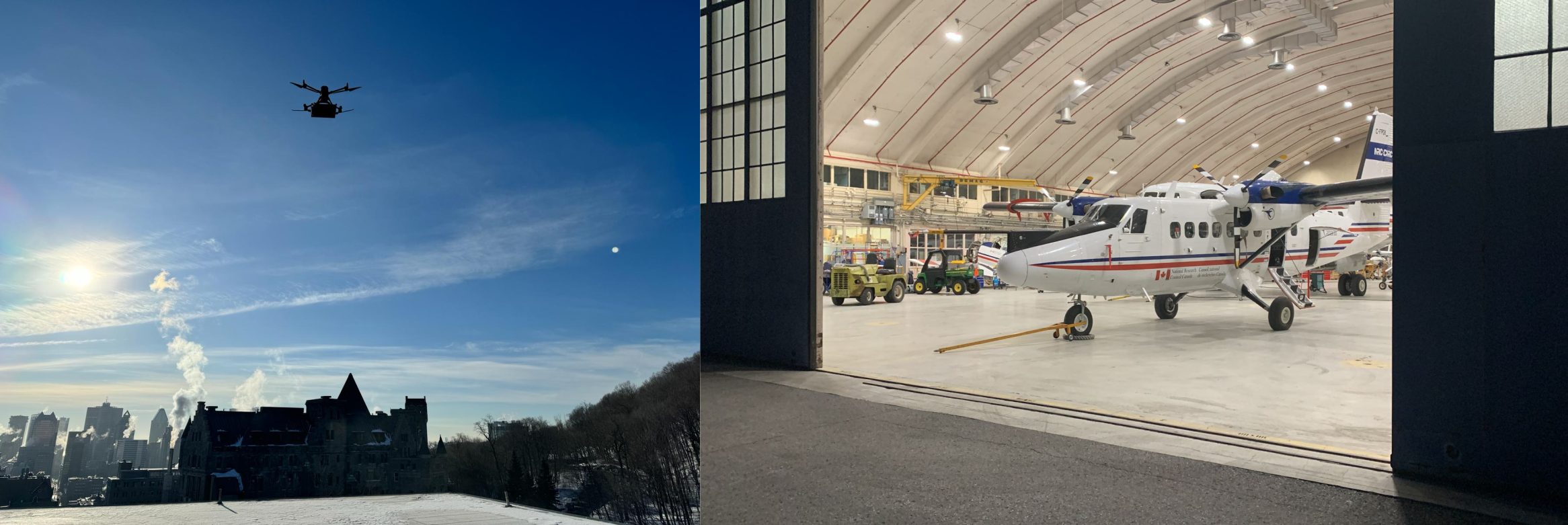
On February 21, 2024, the National Research Council of Canada (NRC) team conducted a targeted winter flight campaign, departing with a flight from Ottawa and flying over critical points in Montreal: Downtown, Gault, MacDonald's Radar Observatory, St Hubert Airport, and Rigaud. In parallel, we measured surface methane and carbon dioxide with a Picarro analyzer and an AERI, both stationed at Downtown Montreal (Burnside Building) and Gault Reserve. The day's activities included the launch of two weather balloons from Gault. Simultaneously, two drone flights took place—one from Downtown and another from Rigaud—flying when the plane reached this critical points.
Simultaneous measurements will enable us to correlate and cross-validate data obtained from our various instruments, ensuring a more robust and accurate understanding of the atmospheric conditions and greenhouse gas profiles during our winter flight campaign.
Installation of a gas analyzer in Burnside Building
December, 2023
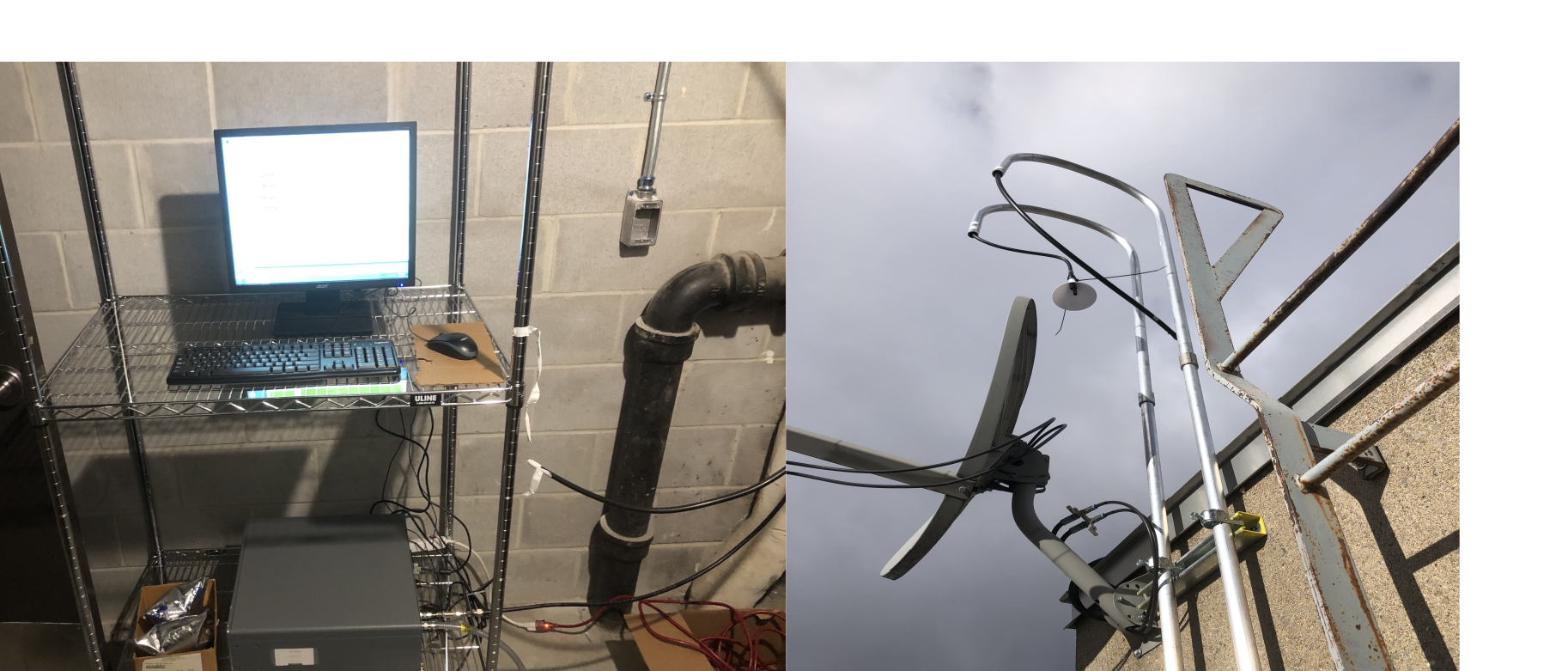
The installation of a Picarro instrument on the rooftop of the Burnside building in the McGill University downtown campus and its integration to an outlet line was successfully completed. This instrument is now operational, and will continuously record mole fractions of methane and carbon dioxide , which will help us capture variations and trends of these gases over time.
Sampling Campaign with the Environment and Climate Change Canada team
16-20 October 2023
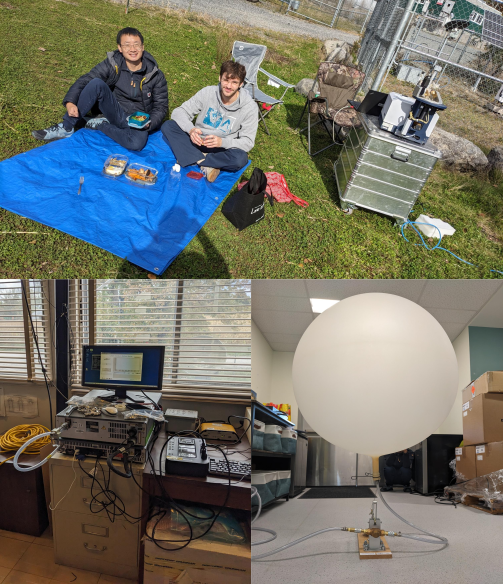
The Climate Research Division group of Environment and Climate Change Canada conducted a week long sampling campaign in the Montreal with our team. In addition to the installation of a Picarro Gas Concentration Analyzer at McGill's radar facility, we conducted mobile surveys with a LICOR gas analyzer, collecting measurements of methane enhancements in the city of Montreal in the Fall. We collected of spectra with two EM27 spectrometers and two AERI spectometers located in the Gault Nature Reserve and the Burnside building at downtown McGill. This dual-spectrometer approach will enhances the reliability of our data by enabling cross-validation of results. Alongside these activities, we also launched two weather balloons, contributing to a comprehensive understanding of atmospheric conditions.
Aircraft instrument integration
October, 2023
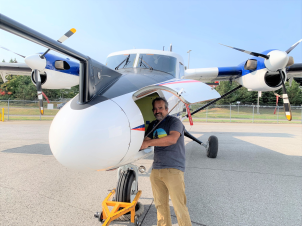
The team of Airborne Facilities for Atmospheric Research and Reconnaissance at the National Research Council of Canada (NRC) has begun the integration of project instruments onboard the Twin Otter aircraft for Montreal winter flights. This aircraft is the most suitable airborne platform for low altitude and slow speed air sampling, which it why it has been extensively used in air quality and emission studies in the past decades. In the picture, Daniel MacDonald NRC Senior Instrumentation Technologist examines the aircraft.
Bicycle surveys
3rd of July, 2023.

This summer we are cycling around the Island of Montreal with our Picarro gas analyzer. The goal is to detect and map peaks of methane. Currently, we have surveyed 3 neighborhoods: Hochelaga, The village, and Pointe-aux-Trembles. This data will be available very soon in the website!
Radiosonde launching for AERI radiative closure test
30th of June, 2023

The vertical profile team successfully launched a weather balloon at the university campus under smoke conditions. Temperature, relative humidity, wind speed and direction data were collected, which are necessary for AERI radiative closure test.
Landfill emission sampling
26th of June, 2023.
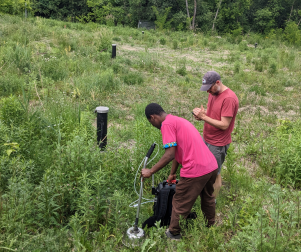
The surface mapping team started surveying historical landfills in Montreal, as they have been found to be sources of CH4 to the atmosphere. When the chamber makes contact with the soil, methane and carbon dioxide diffused from the soil increase inside the chamber, and the rate of increase can be used to calculate an emission flux. If positive, these soil emission fluxes tell us the magnitude of methane emission from the landfills soils. Additionally, we looked for potential leaks in the vents.
Presenting at the CMOS 57th Congress
1-2 of June, 2023.
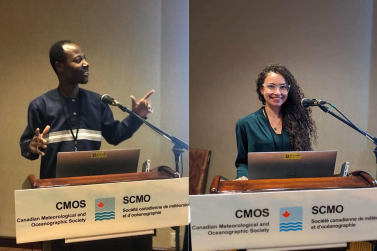
Our group participated in the Canadian Meteorological and Oceanographic Society (CMOS) 57th Congress that took place in St. John's the 1st and 2nd of June of 2023. This time, Jacob Asomaning presented a "Preliminary overview of Montreal methane concentrations using mobile surveys", and Beatriz Ghirardi talked about the "Ground based infrared hyperspectral profiling of atmospheric CO2".
Find the videos from the whole session - Advancing science and technology for monitoring greenhouse gasses - on Youtube: Part 1 Part 2